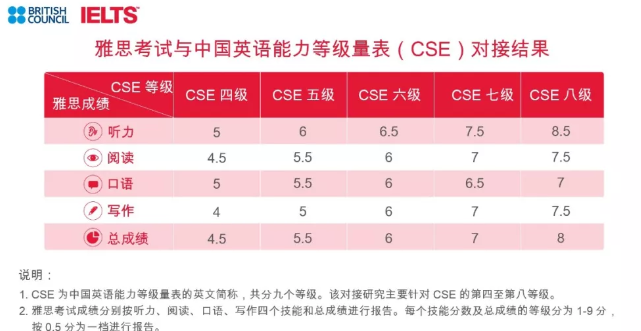LSAT的一分能为您的将来增加多少收入?
|
One point on the LSAT: How much is it worth? Standardized tests as a determinant of earnings
-------------------------------------------------------
Accompanying the topic of ability come many other questions, including the possibility that schooling is simply a screening or signaling device, and the fact that LSAT scores are distorted by factors such as prep courses. In this paper, I attempt to answer the question of how much is one point on the LSAT worth while making note of the bias in scores which may affect my answer. I find that the marginal value of one point on the LSAT, including its weight on school admission, is worth $2,600 in the first year alone, with the value increasing each year. However, excluding its bearing on school admission, one point on the LSAT is worth only a fraction of that amount. I. Previous Work "Economists have been surprisingly ignorant of the quantitative effects of different kinds of ability on earnings and productivity, yet such knowledge is essential in estimating the gains from investment in human capital," (249) writes economist Gary Becker. If workers and firms could determine gains from investment perfectly, there would be no inefficiencies in the education and job markets. It is important to establish first that ability would simply be defined as earnings if we assumed a perfect marketplace. In economic theory, "the neoclassical view is that markets are undifferentiated arenas in which commodities (including labor) can be exchanged at a rate determined by their marginal utilities . . . [However], product differentiation contributes to monopoly power and distorts this exchange" (Hodson 11). Since the marginal utility of labor cannot be perfectly determined, firms must compensate by estimating the marginal utility of a worker the best they can. Much debate among economists has centered around the determinants of earnings. Most of the work on this topic has focused on the investment in human capital, or how years of schooling affect wages. There have also been several studies about how ability affects wages, how school quality affects wages, and whether or not schools simply act as screening devices for firms. Numerous studies have found a definite relationship between ability and earnings, both for starting salary and even more so farther down the age-earnings profile. Paul Taubman and Terence Wales, who have done extensive research in this area, found that holding other factors constant, increases in ability (defined as standardized test scores) add to earning potential, with the differences in earning potential being more pronounced in the top two ability fifths. (Taubman, Sources of Inequality in Earnings 36). Dael Wolfle found similar evidence, citing that "earnings are correlated with intellectual ability as measured by standard intelligence or aptitude tests . . . The relationship between ability and earnings is closer at the upper end of the occupational hierarchy and increases with experience" (Wolfle 72). Other economists have defined ability as class rank, and have come to similar conclusions. Donald Bridgman showed that rank in college did not affect starting salaries much, but in later years, those who had been at the top of the class earned more-30% more after 15 years, and even more with time (Becker 175). But since students with higher test scores tend to attend more prestigious institutions, and perhaps these wage differentials are due in part to the value added by better schooling. Wolfle found that "among college graduates, those who graduate from superior or more prestigious institutions have higher earnings than those from lesser institutions. Although diminished, the advantage is still evident after corrections for differences in ability" (Wolfle 72). Solmon attests that high income later in life is powerfully affected by several dimensions of college quality, including peer-group effects and faculty quality ("The Definition and Impact of College Quality" 99). Other economists, such as Michael Spence, are proponents of the screening argument, believing that schools are merely screening devices for firms. Since the caliber of a school reflects the abilities of its average student, schools act as signals of student quality. Therefore, perhaps a school's value lies in its function as a no-cost signal to firms rather than in its value as an educational institution. Still, most economists are in agreement that both ability and school quality affect wages. As Solmon explains, "The work by Taubman and Wales and my own work indicate that the effects of college quality are not linear; that is, in general, high-ability students get more out of 'good' schools than do students with less ability" ("Schooling and Subsequent Success" 16). All previous work in this area has used data from individuals across schools, so it is virtually impossible to isolate the true effects of ability on earnings without also seeing the effects of school quality on wages. In order to determine how much ability and school screening effects actually effect earnings, one must isolate the effects of schooling, which I attempt to do in this paper. Another problem that economists have encountered in the past are the effects of self-selection. Since abler persons probably invest more in themselves because their rates of return are higher, it is difficult to measure the effects of this self-selection. By using such a narrow group of individuals who are all investing in exactly the same amount and type of education, I can also eliminate these self-selection effects. However, it is still impossible to eliminate all bias from a model comparing ability and earnings. I cannot account for nepotism, personality, or pure luck, which may have large effects on hiring and wages. I also cannot discriminate between effects of true ability and value added by schooling. I can, however, find a fairly accurate estimate of how much one point on the LSAT is worth to the testtaker, and whether its effects extend beyond the law school application. In broader terms, this study will assign a quantitative measure to ability and to schooling and school screening effects on initial wages. II. The Law School Admissions Test-- What Does it Measure and Why is it Used? Every year, roughly 130,000 LSATs are administered to 115,000 people (about 12% of test-takers take the LSAT more than once) who spend four hours testing their analytical, logical, and reading comprehension skills. The admissions process is a classic example of a market for imperfect information. Because admissions officers cannot determine the true ability of each applicant in terms of academic aptitude due to discrepancies between college quality, recommendations, and courses, there is value to them in better information about applicants. The only way to get standardized information about an applicant is to measure him with a uniform test. Therefore, the LSAT is used to homogenize one part of the law school application so that the admissions staff does not have to spend hours deciphering the true value of the applicant's other academic credentials. In the admissions process, evaluators often weigh LSATs roughly equal to GPA. Why is a four hour test given equal consideration as four years of hard work during college? Basically, the answer can be explained in another market-the market for law schools. Law schools compete with each other to attract the best applicants, so the reputation of the law school is of high importance to the institution. Reputation is relayed through what many consumers perceive as a trustworthy source of information, the U.S. News & World Report ranking of graduate institutions. U.S. News, in their valuation of law schools, counts LSAT as 50% of the student selectivity rating (more than GPA, which constitutes 40%), and 12.5% of the total score. Therefore, if a school's median LSAT is higher, its ranking is higher, and its marketability is higher also. As proof that law schools consider the rankings of high importance is the fact that a considerable number of schools lie to the magazine about their median LSAT score in order to improve their rankings. In fact, in 1994, 29 of the country's 177 law schools reported higher LSAT scores to U.S. News than to the American Bar Association, their accrediting body.' Moreover, admission officers, admittedly wary of the predictive value of the LSAT score, tell me that they place great weight on the score to improve their rankings so that they can move up in another game of imperfect information. Aside from moving up in the rankings, do law schools benefit from admitting students with higher scores? Studies by Law School Admissions Council show that LSATs are in fact correlated with performance in law school. In their study titled "The Predictive Validity of LSAT," they claim that "LSAT alone continues to be a better predictor of law school performance than is [University] GPA alone" (23). Perhaps then, U.S. News & World Report is correct in counting LSATs more than GPA. |








